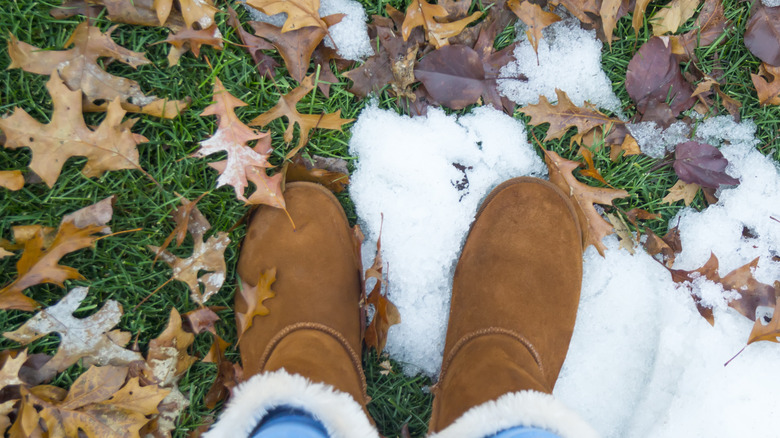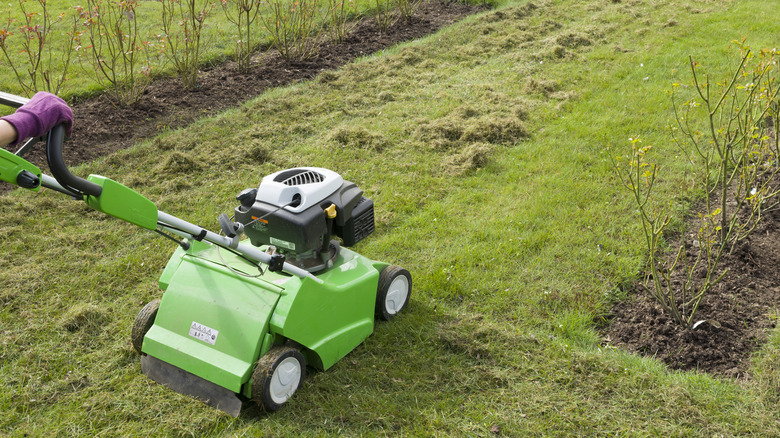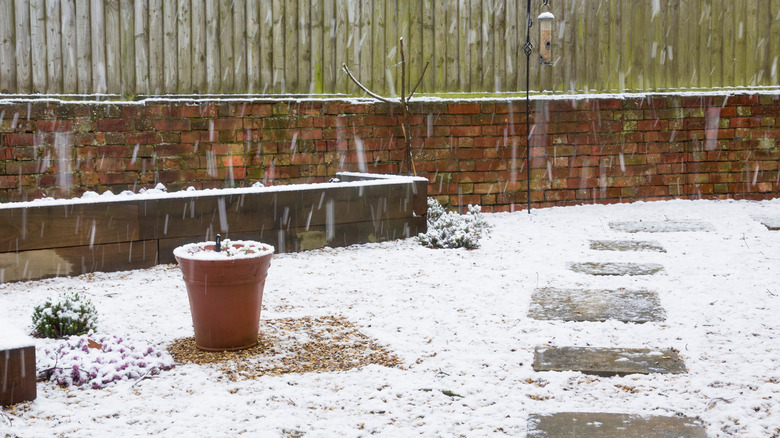How To Keep Your Yard Healthy Throughout The Winter, According To An Expert
The winter season may seem like a time when yard maintenance becomes unnecessary, but that's not always the case. During those colder months, your lawn may look dead — especially if it has turned brown — but the grass is actually dormant, going through a process known as desiccation, notes Virginia Green. Falling temperatures cause grass blades to dry out, and frozen roots are unable to take in water. All of this is what leads to the color change. Most often, grass will revitalize itself in the springtime, but what you do to it now, during the winter, can play an important role in the success you'll have later.
In an exclusive interview with House Digest, Simon Barker, the co-founder and editor at Grow Your Yard, offers some insights into how to keep a yard healthy even through the harshest months. He shares, "When it comes to keeping your yard healthy throughout winter, it's more a case of how to prep your yard to survive the winter. I have a couple of essentials I make sure I do every year."
The importance of aeration
The first way to protect your yard in the winter months is to start working on it during the fall, including removing leaves and trimming back overgrowth. Simon Barker adds that aeration could be a necessary step. "Firstly, I'm a big believer in aerating your grass just before the icy weather sets in. This helps your soil accept more oxygen and allows any nutrients you added in the autumn to soak better into your grass." Doing so supports the needs of the grass throughout the winter.
Barker also reveals, "As it gets colder, you'll notice the ground gets harder and, therefore, more compact. Aerating your yard helps combat this, leaving you in a great place for next year." You may need aeration if you notice puddles in your lawn after a rainstorm or if there's a thick layer of debris on the top, advises Tru Green. It's possible to rent aeration equipment from a home improvement or equipment rental company. Otherwise, turn to a lawn service for help with this project before the deep cold sets in.
Give your yard a rest
The days of playing catch or watching the kids run around are on pause for the time being, and that's a good thing, according to Simon Barker. "Secondly," he says, "try not to use your yard as much. I know it sounds simple, but winter can be a damaging time for your yard; the grass is dormant, and your plants are susceptible to frostbite, root rot, and more." These issues are far more challenging to repair during the spring months.
Take a look around your yard now to find ways to minimize any compaction or damage. "Clear your lawn of debris, put furniture away, be sure to rake leaves, and give it a chance to breathe," suggests Barker. He also says to avoid walking on your lawn once it has frozen or been covered in snow because any trampling at this point will create the potential for future bare spots come spring. Try to keep sidewalks and paths around your yard clear to encourage people and pets who need to walk in the space to avoid grassy areas. Follow these simple steps to ensure your yard thrives during the colder months.


